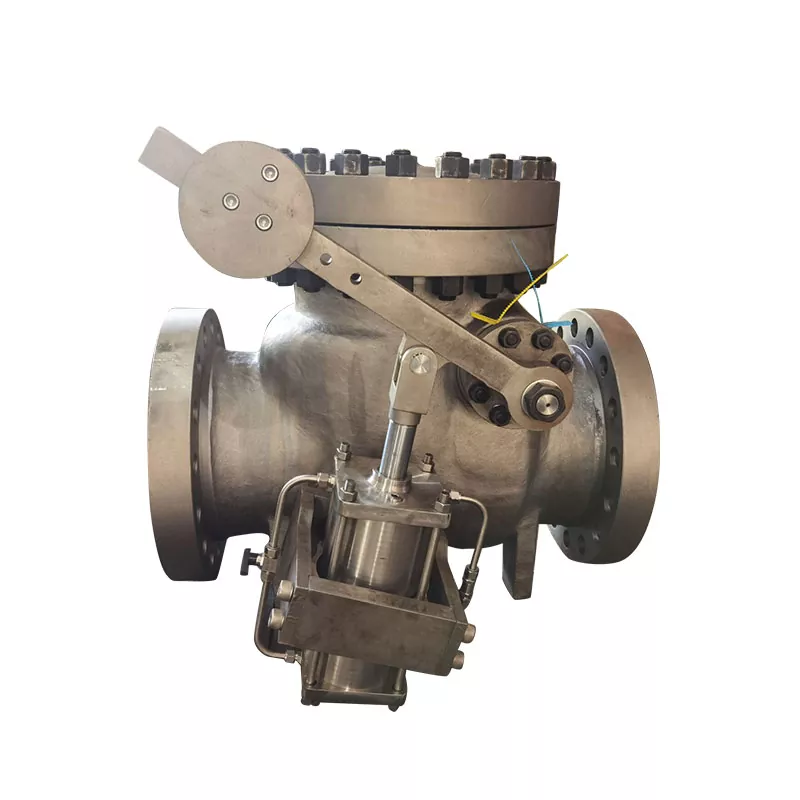How to Control Energy Efficiency Leakage of Check Valves
2025-09-17
Check valves are critical components in fluid systems, designed to prevent backflow and maintain system pressure. However, inefficient check valves can lead to significant energy losses, increasing operational costs and reducing system reliability. Controlling energy efficiency leakage is essential for optimizing performance and sustainability. Here’s a detailed guide on how to achieve this, along with key product parameters to consider.
Key Factors Affecting Energy Efficiency
Energy efficiency leakage in check valves often results from:
-
Internal Leakage: Wear and tear or improper sealing allowing reverse flow.
-
Pressure Drop: High resistance to flow due to design limitations.
-
Material Degradation: Corrosion or erosion compromising valve integrity.
Selecting the right check valves with advanced design features is crucial to mitigate these issues.
Product Parameters for Optimal Performance
To minimize energy losses, focus on the following parameters when selecting or evaluating check valves:
1. Seal Type and Material
-
Bidirectional Seals: Ensure zero leakage in both flow directions.
-
Materials: Use corrosion-resistant alloys like stainless steel or specialized polymers.
2. Cracking Pressure
-
Defined as the minimum upstream pressure required to open the valve. Lower cracking pressure reduces energy consumption.
3. Flow Coefficient (Cv)
-
Higher Cv values indicate lower flow resistance, reducing pressure drop and energy waste.
4. Design Type
-
Swing, lift, or dual-plate designs impact efficiency. Dual-plate check valves often offer quicker closure and better sealing.
5. Compliance with Standards
-
Valves should meet industry standards (e.g., API 594, ASME B16.34) for reliability and performance.
Technical Specifications Table
| Parameter | Standard Range/Options | Ideal for Energy Efficiency |
|---|---|---|
| Seal Material | PTFE, Metal-to-Metal, EPDM | Metal-to-Metal with PTFE coating |
| Cracking Pressure | 0.5 - 5 psi | ≤1 psi |
| Flow Coefficient (Cv) | 50 - 10,000 (varies by size) | High Cv (e.g., 5000+) |
| Valve Type | Swing, Lift, Dual-Plate | Dual-Plate |
| Pressure Rating | 150 - 2500 PSI | Match system requirements |
| Temperature Range | -40°F to 1000°F | System-specific |
Practical Steps to Control Leakage
-
Regular Maintenance: Inspect check valves for wear, corrosion, or seal damage. Replace components proactively.
-
System Monitoring: Use sensors to detect pressure drops or reverse flow, indicating potential leakage.
-
Upgrade to High-Efficiency Models: Modern check valves with low cracking pressure and high Cv values minimize energy loss.
-
Proper Sizing: Ensure valves match pipe diameter and flow rates to avoid unnecessary resistance.
Conclusion
Investing in high-quality check valves with optimized parameters is key to controlling energy efficiency leakage. By prioritizing features like low cracking pressure, robust sealing, and high flow coefficients, industries can reduce operational costs and enhance system sustainability. Always consult technical specifications and industry standards when selecting check valves for your application.
If you are very interested in our company's products or have any questions, please feel free to contact us.



